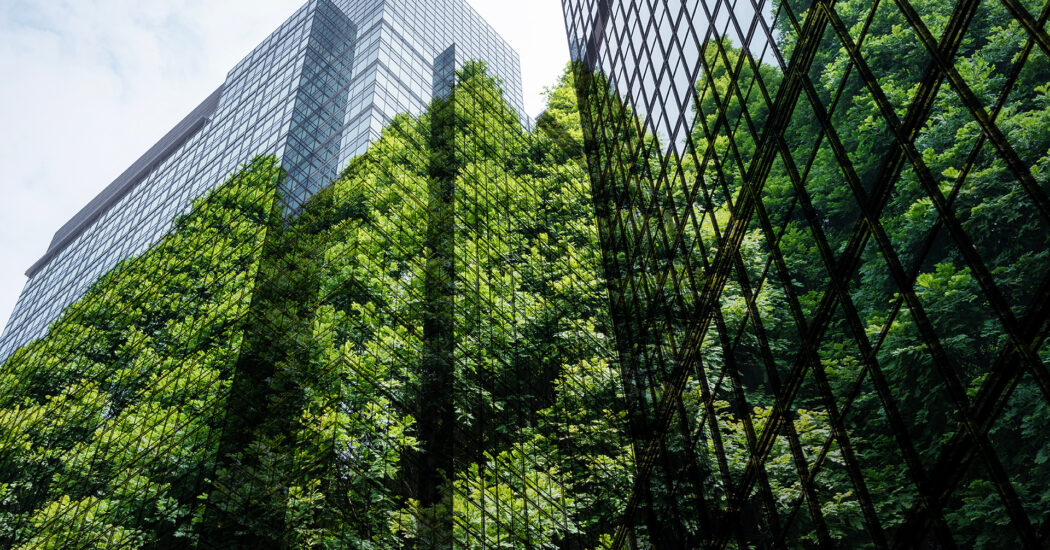Net Zero Buildings Explained
-
Category
Innovation -
Posted By
Schmidt Associates -
Posted On
Aug 21, 2020
“Net zero”—also called “zero energy”—is a term that gets tossed around frequently when talking about sustainable design, but many building Owners don’t know what it really means or what a net zero project entails. Let’s talk about the basics:
What is a net zero building?
The concept of a net zero building is simple: the building produces as much energy as it uses. Thus, its energy consumption is at net zero. This means the building is its own energy source and doesn’t rely on the surrounding energy infrastructure.
How does the building produce energy, you ask? Most net zero buildings contain some form of renewable energy source that powers much of its operational needs. “Renewable energy” refers to power that comes from a natural source and is constantly replenished. This natural source could be sun, wind, water, or even the earth’s natural heat.

Why should you build a net zero building?
One of the most significant benefits to the Owner in constructing a net zero building is long-term cost savings. While net zero buildings have a higher initial cost than standard construction, they make up for it through energy conservation and lower (or no) utility bills over the lifetime of the facility.
In addition, a building that produces its own energy does not need to rely on the power grid. A net zero facility is typically able to store energy, ensuring a consistent supply, regardless of time of day or season (which can impact the supply or strength of the natural energy source). Consequently, the building can remain in operation if there are any power outages.
If your organization has made a commitment to sustainable business practices, a net zero building helps you live that mission by creating a healthier environment. Most electricity in the United States is produced by burning fossil fuels, such as coal, natural gas, or petroleum. This process releases greenhouse gases, such as methane and carbon dioxide, that are harmful to the environment. Renewable energy sources do not produce any by-products and, thus, do not have a carbon footprint.
Where do net zero buildings make the most sense?
Net zero buildings aren’t just a coastal or big-city trend. No matter where you’re located, you can build a net zero building and see significant benefits.
In rural areas, net zero buildings are beneficial because they are power independent. Rural communities often have less infrastructure and smaller electrical grids, which makes them more susceptible to disruptions. A power independent building would not be impacted by a downed grid, and it could even be used as a shelter for people who have lost power during a disaster.
In urban areas with more infrastructure and larger grids, there is often much more demand for power. Brownouts or blackouts are common because of this high demand, particularly during the summer when air conditioning is running across a city. Net zero facilities are not only power independent and immune to blackouts, but they also help prevent power outages by helping reduce demand on the local electrical grid.

How do you design a net zero building?
Many of the analyses and calculations required to design a net zero building are already completed in a standard design process—net zero buildings just need to meet higher thresholds. This means the design process is typically not much more complicated to create a highly efficient building.
The best way to achieve net zero energy usage is to design your building to run as efficiently as possible before even thinking about adding a renewable energy source. The less energy the building needs to operate on a daily basis, the less renewable energy you will need to produce on site. You can do this by choosing efficient HVAC, lighting, and other building systems; ensuring good insulation; and looking at placement and energy efficiency of windows and the overall building envelope.
When it comes to adding a renewable energy source, many factors, including how much energy you need to produce and your surrounding environment, will inform the type or types you choose. Some examples of renewable energy sources used in net zero buildings include solar panels, wind turbines, and geothermal sources.
Can you make an existing building net zero?
While building a net zero facility is easiest from the ground up, existing structures can be retrofitted to meet net zero standards as well. Net zero energy can even be achieved with historic structures.
First, you will need to conduct an energy audit to establish the building’s current energy consumption and determine ways to maximize its efficiency. This could include upgrades like a new HVAC system, improved insulation, or new windows.
Older buildings with older building systems may require more work to get up to speed. However, technologies are constantly improving, so even a relatively newer building can benefit from a system upgrade to reduce energy consumption.
What does it cost to achieve net zero energy?
The investment required to make a building net zero can vary greatly based on the type of facility and if you are building new or retrofitting an existing building. But the good news is, it doesn’t need to happen all at once.
Even if you have limited budget, you can start by designing or upgrading your facility to operate as efficiently as possible now, taking it across the net zero finish line later. Even without being 100-percent energy independent, you will still see significant operational savings from your energy efficient upgrades. Just be sure to plan for net zero in your initial work. This ensures energy consumption will remain low enough that it can be supported by a renewable energy source in the future, and it prevents significant redesigns of the site or facility later to accommodate net zero requirements—which saves you money in the long run.
Many utility companies also incentivize energy efficiency, meaning you can receive a check for making improvements to your existing building or for efficient new construction. Tax incentives and grants are also available for installing solar panels and other renewable energy sources.
Want to talk about the possibilities for your next project? Contact our energy experts.







